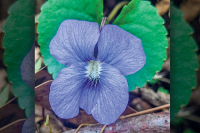Haywood County hosts wilderness navigation course
Haywood County Recreation is offering a wilderness navigation course that will equip hikers with the basics of modern navigation required to not become lost in the wilderness.
Partner content: Why I like iCurbside
If you’re not familiar with iCurbside, it is the Ingles Markets on-line ordering and curbside pick up option we offer at many of our stores. We even have a free “app” for phones! You can learn more about iCurbside here: Shop - Ingles Markets Inc (ingles-markets.com) including a FAQ (frequently asked questions).
Travel app coming soon to steer tourists through western counties
Linda Harbuck doesn’t own a smart-phone herself, but that doesn’t stop the veteran Macon County tourism official from understanding and touting the potential benefits of a new phone app being developed to steer tourists through the westernmost tip of the state.
“This is where things seems to be going,” said Harbuck, who has been the executive director of the Franklin Area Chamber of Commerce for 21 years. “So we voted ‘yes’ to buy in and make sure we would be represented.”
The concept spearheaded by the regional tourism and marketing group Smoky Mountain Host is to promote local events and attractions through a smart-phone app. Individual businesses will be able to buy in, too.
Tourism entities in Haywood, Jackson, Macon, Swain, Graham, Cherokee have at least verbally committed to the concept. It costs tourism groups $11,000 to be included in the phone app. In return, they get to select 10 “story points,” Harbuck explained. These are fairly general story ideas, such as waterfalls visitors can go see, museums to visit, the history of gem mining, for example. There will be a minute or two of video, plus photos and links.
The app will be called “UGO Tour NC Mountains,” and is being developed by Story Point Media of Asheville.
Jon Menick, president of Story Point, got the idea after moving to Western North Carolina from Los Angeles, where he worked in television and some in the filmmaking industry. Menick said he quickly fell in love with the far-western counties, but soon realized how difficult it could be for newcomers to find easy and good sources information.
“It was very unsatisfactory,” he said of his early tour efforts. “I knew a travel app would work, because that is quickly becoming the way to travel.”
So what about those dead spots for cell phone users? No problem, Menick responded — the app is designed so that visitors can preplan their trips to the area, which includes downloading the information as desired. That means the information can be available even where cell-phone reception isn’t available.
The plan is for the state Department of Transportation to put the app on its list of some 2.5 million people, who will be notified that they can download the smart-phone enhancement.
The app should be available to visitors by the end of this summer, Menick said.
How much the phone app costs to develop was not available at press time. In addition to the buy-in fee paid by tourism entities, Smoky Mountain Host got a $10,000 grant from Blue Ridge National Heritage Area for development of the app. Along with county tourism agencies and chambers of commerce, individual tourism-based businesses can buy a place in the app as well.
App brings art to the people – and their smart phones
For those looking to learn more about the sculptures that dot the campus at Western Carolina University, well, there’s an app for that. Or at least there will be soon, thanks to a collaboration between the school’s Fine Arts Museum and Computer Information Systems students in the College of Business.
As a part of a class, now one of the major’s capstone courses, students are building a mobile application that will guide users on an audio-visual tour of the pieces that comprise the school’s public art program.
It’s an idea that really excites the Denise Drury. She’s the museum’s interim director, and she’s stoked about bringing art to the public.
“I’ve always been really passionate about public art because I feel like it’s kind-of a gateway,” said Drury. “A lot of people get into art by seeing it outside.”
She hopes that adding an app to the school’s public-art approach, it’ll entice a whole new demographic into the museum and into interaction with the arts.
The school has run a public art program in some incarnation since the 80s, said Drury, ranging from specifically purchased pieces that find their permanent homes somewhere on campus to regional art competitions whose winners display their creations temporarily at the university.
Currently, the school has nine outdoor sculptures gracing the Cullowhee campus, as well as an indoor, two-dimensional sculpture that hangs permanently in the school’s Belk building.
Included in that number are the winners from a contest last fall that stand sentry in the courtyard outside the school’s Fine and Performing Arts Center.
The goal of the proposed app is to curate these works, giving students, faculty and visitors an interactive arts experience on their own terms and timeline.
Currently, Drury said they’re working on two different content styles – one a richer, more descriptive tour that would include a detailed explanation of the artwork, background information on the artist and their creation, and possibly even commentary from the artists themselves.
The idea is to pack the app with information for off-site users who aren’t standing in front of the works.
“We feel like this is a very good program for people who might not be able to make it to the campus,” said Drury.
But they’re hoping to build in some unique features for on-campus art lovers, too, including a GPS locater that will guide users from one sculpture to the next, highlighting their distance from the various public art pieces.
“It’s just an added incentive to get people out and walking on campus, people who visit Western for football games and are tailgating, people who are coming for a performance and get here a little early,” said Drury, as well as the thousands of students and faculty who pass the sculptures every day.
Associate Professor Dan Clapper is one of them. He teaches the app-writing class, only in its second semester, and he, too, thinks the possibility of new ways to interface with art is an intriguing.
“As a faculty member here, I drive by a lot of those sculptures everyday and I’m curious about them,” said Clapper.
His student team who are working with Drury and her staff to create the app are, said Clapper, treading new territory in how to convey that information, though.
“It’s all kind of new for us, I think it’s new for people in general,” said Clapper. “We don’t really know how long people want to listen to an audio clip when they’re standing in front of a sculpture.”
And that’s where testing comes into play. Drury and her staff provide the content for the app, while the students find a way to make that content work. But there are a multitude of options for introducing users to art. Should there be detailed descriptions? A bank of photos? Artist profiles? Art history information? Will people want to stand in front of a sculpture listening for 30, 60, 90 seconds?
These are all answers that student testing will hopefully answer. And at the end of the process, the result will not only be a great app, but a cadre of students who have hands-on experience in a marketable arena that everyone from museums to fast-food restaurants want to get in on.
From the educational side, Drury said she’s thrilled to be embracing technology and bringing learning to people on their terms.
“It’s something that a lot of our colleagues are doing in the arts, so we feel like it’s a natural progression for us,” said Drury. “A lot more people are buying smart phones and using them as learning tools.”
From a technological perspective, the app-writing class is pretty cutting edge, and Clapper sees it as an exciting technology that’s only going to get bigger.
“I think it’s a technology that’s really just starting to take off, and as more and more people start to have smart phones, we‘ll see a lot more applications,” said Clapper.
This semester, the class is also working on an app for the Catawba County government, the Mountain Heritage Center and a continuing project that will map out a tour of Cherokee history.
The Fine Art Museum app should be available by early summer.









